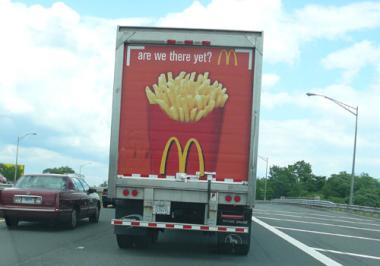Now it has become official. I've been holding off as long as possible from beginning a 100-mile diet. That means not eating anything that comes from farther away than a hundred miles. As a starting date, the first day after a "killer" frost made the most sense, and that day came last week.
From here on in, no more fast food. No more lemon, no more peanut butter, no more olive oil. I live in Holyoke in an old factory and have no will power. If I can eat within a 100-mile footprint of where I live, anyone can.
It makes sense for a lot of reasons beyond the chance to hang out with hot farmers. There's the community, for one thing. You can't just go to a store to buy your ground corn. Oh, no. This involves building relationships with people who know people that have stuff that is "wintered over," not to mention mushrooms in secret places, and visits turn into conversations about weather and the price of feed. When you know whose food you're eating, it tightens the circle of consumption. The fact that a 1,500-mile road trip is required to get only one item on your plate is now being trumped by even more hair-raising statistics.
Michael Pollan, author of In Defense of Food and The Omnivore's Dilemma, writes: "After cars, the food system uses more fossil fuel than any other sector of the economy—19 percent." Pollan throws down the gauntlet with, "In 1940, it took 2.3 calories of food energy for every calorie of fossil fuel energy to produce a single calorie of modern supermarket food. Put another way," he concludes, "when we eat from the industrial food system, we are eating oil and spewing greenhouse gasses."
In the Valley, where oil prices are creating all sort of havoc on every level—including an increase in demand at agencies, shelters and soup kitchens—children are being drawn into the local food movement. On a beautiful Sunday during the Columbus Day weekend, a yellow bus of full junior high students pulled up to the side of a farm on the Connecticut River. Their leader brought them beyond a stand of trees to a vista of food. The kids, city slickers from Springfield, stood staring at row upon row of lettuce planted in perfect formation—the produce offered up by the farmer who was unable to sell the rest of his harvest because of yellowing leaves on the outside of some of the plants.
The kids got out their knives and their brightly colored bags and went at it, taking as much as they could carry. They were part of The Gleaning Project, a three-year-old initiative funded by the relief organization Rachel's Table in Springfield. That Sunday, the haul amounted to several hundred cases of lettuce that went on the menu at shelters and kitchens in the Valley.
And it was needed. According to a spokesperson at Kate's Kitchen in Holyoke and one at the Franklin Community Meals Program, demand is way up this year. The Food Bank of Hatfield is reaching out to other organizations for assistance in managing rising fuel costs.
Gleaning is an ancient ritual practiced by the poor, gypsies and food activists of every stripe. In the Valley, apple drops—crops left over after the last truck from the wholesalers pulls off the property, another product that would otherwise sink back to the earth—is a quiet commodity. Fresh and local, the items have a taste that's better than anything you can get in a restaurant. (Any fisherman will tell you the best-tasting fish is eaten on the boat, immediately after it is caught.)
In New York, at a "locavore" restaurant, the "This Morning's Farm Egg" goes for $15. Blue Hill on Washington Square has been getting away with these prices and this menu for years and it's not just hype: the food is that good. They grow their own and truck it down to the city. Anyone reading this in the Valley has access to local eggs within a few miles of his or her house. We're just lucky that way.
It will be tough to do a 100-mile diet and say goodbye to olives, red wine, chocolate and coffee. Although there is not much to glean in February, there will be lamb, beef, chicken, eggs, cheese, milk and stuff I have "put up" (a scant eight jars of tomatoes that took days to can). For bread, we'll have to take a wait-and-see approach. It means baking every two days with grain that may or may not be available, and if it is, what are those little black things in the sack?
It would be cheaper and easier to eat fast food, but think of the greenhouse gasses that would be spewed. If beneficiaries of Rachel's Table are sitting down to a salad of leafy greens gleaned from the silty soil of the Connecticut, the poor are eating better than the rest of us…if we're not eating locally."



